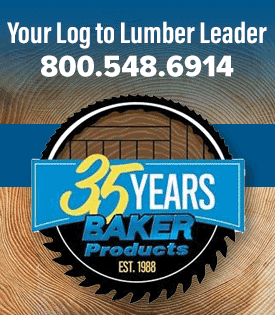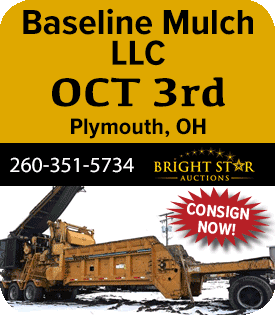Articles, Contributed Resources & LUMBERMENOnline's Blog
Submit Your Article & Valued Content Go Fast Manufacturing, under new ownership since early 2015, has been focusing on building the company’s reputation, by prioritizing customer support and product reliability.
Dan Berken, president, who became involved with the company in late 2014 before finalizing the purchase, said those are very important aspects of the business under his leadership. “We’re here to provide customer service for any of our customers’ needs,” he said. “We’re also keeping parts on hand for the existing equipment lines.”
The company’s dedusters, for example, feature steel brushes that wear down over time, and the band saws have guide blocks that must be replaced periodically. Go Fast keeps these and other replacement parts well stocked and ready to ship out the same day to customers in the sawmill, pallet and container industries all over the country.
In addition to having parts ready at a moment’s notice, Go Fast also works closely with its customers to develop solutions to challenging problems. This year it built a new 103 Deduster to help a new customer in Ohio which was having a problem with dust freezing to boards, but needed a deduster that could handle longer lengths.
“In Ohio here, we deal with a few months of frozen wood and sawdust so we have a big sticking issue so I wanted to work with a company that had steel-brush construction on their deduster,” said TJ Harvey, operations manager at Hope Timber Pallet and Recycling Inc. in Newark, Ohio. “I found these guys in Wisconsin where it’s even colder than here,” he said.
Most companies do not build dedusters with steel brushes, he explained; they have to be added on as an additional component. Also, Harvey said he wanted a deduster with a side-sweeping design, which wouldn’t kick dust back on the boards as they went through, like his old machine.
At that time, he was having speed problems with his old deduster and also issues with it not fully removing dust. “I was also constantly having to remove the deduster from the ends of the resaw because it couldn’t handle the lengths,” said Harvey.
Even worse, he was beginning to get complaints from customers who were unhappy about dust on their products after the wood thawed.
After contacting Go Fast, Harvey found the supplier’s turnaround time to be remarkable. Go Fast customized a machine for him that would handle 96" boards and had it in his plant ready to install in about three weeks. “They were great to work with, and they custom-built me a machine,” Harvey said. “I run it every day. It’s a total tank of a machine and it’s done a great job. I’m very happy with it.”
“It’s important to have a good deduster because if the deduster is not working, it puts a screeching halt to your line,” said Kevin Wieser, Go Fast’s design and development manager. That’s because it’s usually toward the end of the resaw line, right before the stacker.
The company’s standard model was about 79" long, before designing the longer machine for Hope Timber. “We extended the frame, hopper and belt lengths, and the infeed fences to make them a longer model.”
“It was great working with them,” Wieser said of Hope Timber, explaining that Go Fast is now finding there is also a demand elsewhere for the longer deduster model. “We’re selling quite a few of them.”
Berken believes having a good handle on customer needs and product performance is key to Go Fast’s future success. He should know since he has a background in the sawmill business, and runs several Go Fast lines himself at his own cut-stock plant. This lets him see the equipment in action on a regular basis, and also helps the company to come up with innovative ideas.
For more information, call 800/854-7439 or visit www.gofastmfg.com
By: Go Fast Mfg LLC
Stemming from a father and son’s dream to build their own business, Hunski Hardwoods salvages diseased and dying urban trees and mills them into high quality slabs and lumber. Established in 2010 by James Hunsaker and his son Nick, the California business has increased production and efficiency with the addition of their Wood-Mizer WM1000 headrig that offers a 67” diameter log cutting capacity.
Involved in the urban logging industry for over 30 years, James Hunsaker made a habit of taking his son Nick to work with him as far back as he can remember. “Early on, my dad was working by himself salvaging walnut orchards and urban walnut trees for sale to companies making wide slabs and lumber,” said Nick. “After spending some time at a few of these companies and seeing what they did with the logs, we realized we could do the same thing.” Not long after, the father and son team went from selling only logs to also selling wide slabs and Hunski Hardwoods was born.
From the start, James and Nick labored with a chainsaw mill that would take up to eight hours to cut a single log depending on the size. That was until 2013 when they watched a demonstration of a Wood-Mizer WM1000 headrig and realized the potential and growth they could experience with their business. “Once we saw the WM1000 in action and how it made easy work of any sized log, we knew we needed one,” said Nick. “Before the WM1000 we could mill one to maybe two logs per day, now we are averaging three to five per day with ease. Not only can we cut more logs per day, but we are gaining one to two more slabs per log as well. We couldn’t run our business without it.” Nick recalls that in the first two weeks of owning their WM1000, they were able to mill 30 logs that yielded approximately 200 slabs.
Hunski mills urban walnut logs into wide slabs, lumber, gunstock blanks, billets, and turning wood while supplying their salvaged wood products to a wide variety of clients including woodturners, woodworkers, furniture makers, gunstock makers, interior designers, and even guitar makers. “Since we go out and find the trees, salvage them ourselves and mill them, the whole process stays in house and we can tell our customers the whole story of the tree,” said Nick. Sawing 2,000 board feet and running the mill 5 hours per day, Nick says the WM1000 allows them to be more efficient with their milling by saving time and money. “We are salvaging walnut on a daily basis and the faster and more precise we can mill them, the faster we can sell them,” he said.
Visit www.hunskihardwoods.com for more information.
By: Wood-Mizer Products, Inc.
Washington, DC In comments filed with the US Department of Agriculture regarding a revised proposal for a hardwood checkoff program, the original entity to request that USDA pursue the establishment of a checkoff program, the Blue Ribbon Committee, proposed yet a third plan. In its official comments, the group wrote:
… we believe further refinement is needed to reduce the scope of the program, simplify compliance, and strengthen support within the hardwood industry.
The BRC now proposes that green hardwood lumber and green air dried lumber be removed from the proposed definition of “hardwood lumber products” thus leaving only kiln dried lumber to bear assessments under the checkoff. The effect of this definition change, according to the BRC’s official comments to USDA would be,
The eligible class would be reduced from over a thousand mills to approximately 375 mills which have dry kilns or contract dry kiln capacity for sale of kiln-dried lumber, a more readily identifiable category of mills and more in keeping with the scale of the other forest industry checkoff programs.
According to the USDA, there are more than 2,800 hardwood manufacturers in the U.S., and under the BRC’s original proposal, more than 1,400 companies would have been eligible to vote in any referendum. The latest proposal to include only 375 eligible equates to 13 percent of the industry, which is, in fact, a far smaller percent of the industry than covered in other forest product checkoffs. Under the Softwood Lumber checkoff, the eligible class was 61 percent of producers, with those producing less than 15 million board feet exempt. Under the Paper and Paper Packing checkoff, the eligible class was about 67 percent, with those producing less than 100,000 short tons exempt.
Jeff Edwards, of Edwards Wood Products, and co-chairman of the US Hardwood Lumber Industry Coalition, responded to the BRC’s proposal, saying “it is quite telling that the BRC admitted to USDA that it is necessary to exclude 87 percent of all domestic hardwood manufacturers in order to ‘strengthen support’ for this – or any – checkoff proposal.”
Edwards continued, “the BRC clearly recognizes that the overwhelming majority of the hardwood industry does not want a checkoff program so the BRC’s strategy appears to be to push one through with the barest minimum of industry input and, then, once established, one can only assume there will be further attempts to pull in more of the industry to pay assessments.”
Indeed, in the original proposal published in the Federal Register nearly two years ago in November 2013, USDA’s Agricultural Marketing Service stated, “the BRC believes that $10 million in assessment income is the threshold for an effective program that could help to improve the market for covered hardwood.” In its latest comments, the BRC states:
We continue to believe ($10 million) is an appropriate amount …. The changes we are recommending would significantly reduce that amount, resulting in a roughly $3 to $4 million annual program. … A $3 million program would be a huge step for the hardwood industry
According to Jeff Hanks, of Bill Hanks Lumber, and co-chairman on the US Hardwood Lumber Industry Coalition, “while some may consider a checkoff with less than a third of its target revenue a ‘step’ in the right direction, it is, in fact, a huge leap to assume that the BRC’s latest proposal could even generate $3 million. In reality it will generate less than half that amount by our calculations.”
The U.S. Hardwood Lumber Industry Coalition conducted an analysis of the BRC latest plan. That analysis was presented at the Virginia Forest Products Association annual meeting held September 11-13 in Hot Springs, Virginia. According to the Coalition’s calculations, there’s likely to be an estimated 2.2 billion board feet of qualifying kiln dried lumber sold as exports and sold domestically for millwork, furniture, cabinetry, and flooring, which valued at average shipment prices from August 2015 and subject to a $0.50 per $1,000 assessment rate proposed by the BRC, would generate approximately $1.25 million in assessment revenue. This amount does not take into account the exemption for companies under the $2 million annual revenue threshold, nor the exclusion of Alder and Pacific Coast Maples as the BRC also requested in their comments.
Even assuming that all utilization of kiln dried hardwood lumber was subject to the BRC’s proposed assessment rate, and not taking into account the exemption for companies under the $2 million annual revenue threshold, nor the exclusion of Alder and Pacific Coast Maple, the BRC’s plan would raise only $1.9 million, still far short of their $3 to $4 million claim.
Hanks concluded, “A checkoff of $1.25 million isn’t enough to fund effective research, education and promote programs for the hardwood industry, but it is an expensive first step down a road toward a checkoff that the vast majority of the industry does not want to travel.”
THE CHART BELOW CONTAINS DETAILED ESTIMATES AND CALCULATIONS OF THE BRC PROPOSAL.
# # #
The US Hardwood Industry Coalition is comprised of hardwood lumber manufacturers nationwide who oppose USDA’s most recently published Checkoff proposal. In May of 2014, the Coalition commissioned a telephone research study about industry attitudes towards the Checkoff. Conquest Communications of Richmond, Virginia, questioned hardwood lumber manufacturers identified on a list from USDA of eligible companies to vote in any referendum on the Checkoff. A total of 257 companies responded. Those respondents represent 18 percent of the companies eligible to vote on USDA’s proposed checkoff, which is a statistically representative sample of all hardwood lumber manufacturers. When presented with the question, “as the USDA checkoff proposal is written, do you plan to vote for it or against it?” a total of 83 percent of respondents indicated they would vote against the checkoff program.
By: US Hardwood Lumber Industry Coalition
It was then, in the 1980s, that harvesting urban timber began to be a focus of attention. In California alone, it was estimated that almost 4 billion tons of solid wood waste was going into the state’s landfills in the late 80s. Assembly Bill 939 was passed partially in an attempt to divert this wood waste, but it wasn’t until the 1990s that salvaging urban timber really took off to become a more well-known business model.
Since then, the focus has been: “We know there is still a lot of wood being wasted, what can we do to change that?” Through my role with Wood-Mizer, I have organized and assisted with many urban forestry initiatives, conferences, and seminars to try and find a solution to this waste. One of the plans in place is to have cities plant trees that will have the highest economic value when they come to the end of their life cycle, but this has been slow to catch on. So the big thing we have focused on is training and education.
One of the biggest obstacles keeping material from landfills and mulch use is training and incentivizing tree service companies to cut logs into appropriate sawing lengths. Traditional removal of large logs isn’t always possible in small urban spaces especially when trees are surrounded by buildings and infrastructure. Without specialized removal equipment, or the funds to make it economically viable, tree service companies may only be able to obtain logs in short lengths, making it difficult in many cases to warrant sawing into lumber. Over the last few years we have noticed that we are making headway in educating the public as tree owners are beginning to demand that their trees are cut for re-purposing so they don’t go to waste. Tree service companies are also cutting logs to saw lengths when possible and calling us to source a local sawyer who can pick up the logs and utilize them.
All those years at the State and County fairs are paying off and tree owners are starting to realize that there are more resourceful options than the status quo. Other than by customer request, tree service companies can also be incentivized by knowing that there are sawyers who are interested in the logs – and will take them. This can be an advantage to the tree service company as it can save on costly disposal fees. In many cases we have trees dropped off at our location from a tree service company, or construction company doing a removal, simply because we are closer than the county landfill – and if there is a good amount of saw quality logs, we will deal with the residue at no charge.
But beyond statistics, official measures and assembly bills to reduce wood waste, there are also companies who are utilizing urban timber because it’s economically viable. At the end of the day, if you can’t make a living from it, you aren’t going to be able to do it for very long - no matter how good it feels. There are many companies out there who, like my own, are cutting urban woods because it’s a win-win situation. It’s good for the environment, it’s good for the tree service company, and it’s good for our business. It’s an amazing feeling to be able to give a historic landmark tree, or a tree with sentimental value a second life and allow it to live on for future generations to enjoy.
One of the things that we are able to do with urban, salvaged, and reclaimed woods we sell at Far West Forest Products is to give that back story on where the wood originally came from and what caused its demise. Not only do our end lumber consumers find it fascinating, but they also may be able to use the information to fulfill their Leadership in Energy & Environmental Design (LEED) green building projects for recycled product, or product that was sourced within a 500 mile radius.
All over the country you will see craftsmen making unique tables, benches, fireplace mantels, pens, and bowls out of urban wood. There is even a company making bottle stoppers and another making longboard skateboards. Urban lumber is gaining popularity in the U.S. at a rapid rate as people are becoming aware that it is a viable option. If people are presented with two options that are fairly comparable in appearance and price and one just happened to be saved from a landfill or chipper – most people will choose the green, eco-friendly alternative. Also, with the use of a portable Wood- Mizer bandsaw, it is now affordable to mill urban trees that are not commercially harvested on a large scale and allows you to present a variety of unique woods to the marketplace.
By: Wood-Mizer Products, Inc.
By Eric Wagner
This year Wagner Meters celebrates the 50th anniversary of a true American Dream story – the story of a young man who founded a small company and, with imagination and vision, strong values, and a commitment to making products that outperformed all others, built it into one of the premier moisture meter companies serving the Forest Products industry.
Although Wagner Meters began 50 years ago, the story of how we came to be starts a few years earlier . . .
It was sometime in the early 1960s at a sawmill in Redmond, Oregon.
Management was frustrated. Their traditional contact moisture detectors were giving them fits.
These detectors came in big, bulky cabinets equipped with radio vacuum tubes. Hard to use, hard to calibrate, and hard to interpret, it was no wonder they were troublesome.
My grandfather, Delmer Wagner, an electrician at the mill, saw this problem as an opportunity to find a better way to measure moisture in lumber. Energized by the challenge, he experimented with new designs and new technologies.
What he came up with was the first in-line moisture detector using transistors. Smaller and more compact, it cost less to make, was much more reliable, and easier to calibrate.
In 1963, shortly after the mill took out a patent on his newly-designed moisture detector, granddad left the company to teach at a local college. But after two years, he decided to start a business selling moisture detectors – a device he knew quite well.
He named his company Wagner Electronics. The year was 1965.
But to get his business off the ground, he needed a product. Working out of his garage in Terrebonne, Ore., granddad designed a second in-line transistorized moisture detector. This new, improved model was smaller than his original design.
But like any new product that comes out, there’s always skepticism about its performance. Granddad overcame this obstacle with a gutsy approach.
He invited the mills to try out his new moisture detector for a month at no cost or obligation. Should they have a problem with the meter, they were to call him. If not, he’d return in 30 days to either pick it up or collect payment.
Not surprisingly, these new meters were a big hit. Sales took off and so did Wagner Electronics.
Wagner Electronics moved from Terrebonne in 1970 to its present corporate headquarters in Rogue River, Ore. It’s here where we also design, test, and assemble all our moisture measuring devices.
Innovation Fuels Wagner Meters’ Growth
I believe my grandfather’s vision and creative thinking led to our company’s success in those early years. He seemed blessed with an amazing intuition that led him – and the outstanding people he hired – to create a slew of new and innovative products that greatly improved the way moisture is measured.
For instance, following his invention of the first transistorized in-line moisture meter, he developed the first non-contact meter. This device never touched the wood, yet was still able to measure its moisture content.
This was huge for the industry. Previously, the mills had to slide the wood over the sensors to get a reading. But this caused it to wear out quickly.
And every once in a while, wood would jam up in the conveyer system and clobber the sensors. Sometimes they got hit so bad, they had to be returned to the factory to be rebuilt. So granddad’s invention saved the mills considerable time and money.
Granddad also devised a way to calibrate the meters to moisture content percentage. The relative scale then in use was awkward and hard to adjust. His invention again saved time and made calibrating a lot easier.
In the late ‘70s, he also helped kilns improve their operation by inventing an in-kiln moisture detector. His first unit, Model 778, revolutionized the industry.
Today, we have the MC 4000. Much more sophisticated, it can interface with computerized kiln control system software packages. This gives the kiln operator an accurate moisture measurement and monitoring tool for better control over the kiln drying operation.
About the same time that granddad introduced the in-kiln moisture detector, he also figured out a way to use in-line meters to troubleshoot kilns.
Our series of troubleshooting tools and processes proved to be invaluable. Customers could now get the maximum value out of their wood. The amount of wood that came out too wet, with a need to be run through the kiln again, or too dry, causing it to warp, split and crack, had been significantly reduced.
At first, granddad used microprocessors to aid in the troubleshooting. Later, as the information sought became more complex and the technology became available, we connected a computer directly to our in-line moisture meters.
The combination of computers and in-line moisture meters told operators the moisture ranges of the wood throughout the kiln. It also enabled them to track charges throughout the months and seasons of the year. And they could also track one kiln against another to see which one performed better with specific wood species.
For instance, one kiln may dry better with one species, while another kiln dries better with a different species. This allowed operators to optimize what species of wood goes into each kiln.
We also devised a way to count the number of boards in different moisture categories – too dry or too wet. Kiln operators could then see if they were over drying or under drying. If they spotted a problem – for example, too much steam going into one end of the kiln – they could make adjustments and improve performance.
Eventually, we kept refining that process to the point where we were able to track where each stack of wood came from out of the kiln. We also developed a histogram that showed the moisture content of boards as they were distributed throughout the kiln. Operators could see precisely where their wet/dry spots were in the kiln.
And we even hooked up a printer to the in-line systems so operators could print out the histograms. Thus, based on the moisture meters’ output, they could clearly see their problems and know what to correct.
Granddad and Wagner Electronics invented that whole process of kiln troubleshooting . . . a process that became a huge success. It has saved the mills hundreds of thousands of dollars.
I can imagine it was an exciting time in our history to be creating new products no one in the world had invented before.
From Father to Son
My father, Ed Wagner, started working for Wagner Electronics in 1967 at the age of 10. It was a way for him to earn spending money after school. He wired, assembled, soldered, welded, and tested meters.
By the time dad left for college, he was well grounded in all the technical aspects of the business. Shortly after earning a degree in engineering, he moved into management with his promotion to Production Manager.
When granddad retired about 1987, he sold the majority of stock in Wagner Electronics to my dad. Dad was then named president and CEO of the company.
Dad was cut from the same cloth as his father when it came to creating innovative products. In fact, one of the things my father invented was the hand-held moisture meter. He knew some mills were using hand-held pin-style meters, but they presented problems such as temperature sensitivity, which affected accuracy, and lack of depth measurement. This motivated him to develop an improved hand-held meter, one that was pinless.
Dad spent considerable time and effort developing the technology of the pinless meter, and making sure it was highly accurate. We started selling dad’s first model, the L600, to the mills in the early ‘80s, though we didn’t market it aggressively at first.
But we changed direction – and our marketing efforts – during the early 1990s recession. Hurt by the weak economy, the mills stopped buying capital equipment. This included the larger, more expensive in-line moisture detectors we were selling.
Since we knew the mills needed moisture meters, we stepped up our marketing of the smaller, hand-held pinless meters which they could better afford. Our efforts paid off. The mills were quite willing and able to buy them.
Fortunately, despite the recession, we were able to provide our customers with a meter they needed and could afford. So we survived.
We have continued refining and improving our original pinless model. Thus, each successive generation of pinless meters we brought to market was technologically more sophisticated and sported improved features.
Initially, we introduced the L600 models back in the ‘90s. Our latest model, the L622 digital recording lumber moisture meter, is a non-invasive wood moisture meter that comes standard with the Stat-Pack. This PC compatible software package enables users to create custom species lists, and to archive L622 data on a PC hard drive or external hard drive for long term storage, retrieval and report generations.
Another original concept he developed is the stack probe. With this device, kiln operators could take readings in the center of the stack. Today the Model L722 Stack Probe Sensor coupled with the L622 Digital Recording Moisture Meter makes it easy to reach deep into stickered units of lumber and take accurate moisture readings without the danger of broken pins. Wagner Meters’ electromagnetic wave technology makes it it possible to take multiple readings throughout an entire stack in just minutes.
For 45 years we had operated as Wagner Electronics. But we realized our name didn’t clearly address what we’re all about – moisture meters. In 2010, we changed our marketing name to Wagner Meters.
The Key to Our Longevity
Fifty years is a long time for a company to survive. In fact, according to the latest statistics, the lifespan of many companies is typically 15 years.
So what is the key to Wagner Meters’ longevity? Several things come to mind.
First, it’s the dedication, creativity, and incredible work ethic of Grandfather Delmer and all the many excellent people who have ever worked for this company.
It’s maintaining a family-run, family-oriented business adhering to solid core values . . . core values that have helped us make sound, ethical decisions.
It’s sustaining a culture of innovation. Throughout our history, we’ve developed more innovative moisture measuring products than any other company . . . products that have radically reshaped the Forest Products industry.
It’s manufacturing reliable, quality products built to last . . . products known worldwide for their accuracy and superb performance as documented by independent third-party testing.
It’s being a leader in educating our customers about the characteristics of wood and how moisture affects it. This education effort started with Grandfather Delmer and it continues today through the use of trade journal articles, our website, the Internet, sponsored videos, social media, and more.
And last, but not least, it’s putting a huge emphasis on our valued customers. We excel at listening to our customers . . . understanding their needs . . . and giving them an exceptional customer experience. It’s no wonder we have thousands of loyal, satisfied customers – both here and abroad.
In closing, on behalf of my granddad, now retired, my father, and the best employees anywhere, I want to thank our Forest Products customers for their unwavering loyalty and trust in Wagner Meters these past 50 years. We greatly appreciate you and pledge to continue providing you with outstanding service and superior products for the next 50 years . . . and beyond.
By: Wagner Meters
2014 marked the start of a third decade serving the pine and hardwood sawmill industry and ASM continues to increase our workforce, including two additional machine designers, a dedicated CNC programmer, purchasing manager, safety manager and manufacturing personnel.
Popular new ASM products include vector motor positioning Log Chop Saws with machined V-Ways, Timber Trimmer with fixed and electric actuator operated positioning saws, Automatic Package Doubler, vector-motor driven Package End Squeeze, High Speed Line Shaft Trimmers that offers standard saw spacing, precision end trimming and custom saw spacing as close as 6”.
ASM offers a complete line of high-speed, custom sawmill machinery, including the heavy duty ASM Carriage with On-Board Forward and Reverse Horizontal Log Turner and Slant option, Hybrid Carriage Drive, Carriage Slabbers, patented Steady Scan Log Conveyor, Tilt Hoist, High-yield Curve Canting and Curve Sawing, Sharp Chain and conveying systems. Additionally, ASM offers reconditioned bandmills as well as the capability to cost-effectively recondition and update most sawmill machine centers to the latest technology.
ASM continues to expand our plant capability and has invested an a new CNC Plasma Burn table, a 48” x 60” CNC Horizontal Milling machine with a 10’ bed, a 40” CNC Lathe with a 10’ bed, CNC metal cutting saw and Inventor design Software to compliment the Solid Works and AutoCad we use.
ASM has a well-deserved reputation for manufacturing heavy-duty sawmill machinery that is designed and built to last. ASM does all our design, machining and fabrication in-house, which provides exceptional quality control. ASM and the 24 hour Parts Department can be reached at 850-537-5333 or www.asmei.com.
By: Advanced Sawmill Machinery
In less than three months after taking ownership of the family sawmill business, 3rd generation owner Mike Junk and brother-in-law Shawn Fowler made a big change in order to get big results out of their grade lumber operation. By installing a Wood-Mizer WM4000 industrial headrig to replace their old circular sawmill, Mike and Shawn increased efficiency, yield, and profits for their business.
Sawing hardwoods to produce grade lumber for moulding, caskets, veneer, stair treads, flooring, cross ties and pallet cants, the Pennsylvania basedcompany used a circular sawmill as the center of their operation for more than 70 years. By using old technology and inefficient production methods, Honey Grove Hardwoods was struggling to keep up with competitive timber prices and increasing industry demand.
With more than two decades of experience in the lumber business, Mike noticed a shifting trend in the competitive industry. “For many years, the lumber business has been based solely on production. This is no longer the case,” he said. “The industry is changing from ‘how much you produce’ to ‘how much profit you can make’.” To keep up with the evolving lumber industry, Mike and Shawn came to the conclusion that their circular saw with conventional wide-kerf blades had reached the end of the line. “We realized we were running outdated equipment when we weren’t getting the footage and grade yields that we thought we could get with thin-kerf technology,” Shawn said.
Looking to learn more about thin-kerf, Mike and Shawn travelled to Wood-Mizer headquarters located in Indianapolis, where they witnessed the WM4000 industrial headrig in action. “After seeing the WM4000, we realized the potential production and yield increase advantage over the circular mill we were currently using,” Mike said. Seeing proof that a narrow band, thin-kerf blade sawmill could produce less waste, more product and use less energy to saw, Mike and Shawn decided to move forward with their operation and installed a complete Wood-Mizer system including a WM4000 headrig, Log Deck, Three-Way Conveyor, Green Chain, and EG400 Edger.
Mike and Shawn admitted to working through a learning curve with the new equipment. “We were used to operating with a log carriage instead of the log placed directly on the bed of the headrig, so we had to learn how to use the controls and setworks of the WM4000,” Shawn said. “We also had to learn the correct adjustments and mill alignments in order to keep the band finely tuned in order to produce accurate lumber. I’d like to give Wood-Mizer a special thanks for their customer support and helping to educate us on these issues,” he said.
Mike says the WM4000 is the all-in-one primary breakdown and resaw for their operation. Compared to their old circular sawmill operation, Mike said their yield has improved greatly with Wood-Mizer equipment. “The much greater yields of the thin-kerf and the accuracy of the setworks are second to none and has positioned us to be very competitive on a daily basis,” he said. Being able to produce more product from fewer logs also cuts down on transportation costs and increases the profit per log. “We are getting the same amount of lumber while using 25% less timber and raw materials, which in turn, reduces transportation costs across the board,” Mike said.“We saw every log from start to finish on the headrig in order for the sawyer to get the most value out of each log,” he said.
Although Honey Grove Hardwoods basically produces the same products as with the old circular sawmill, Mike says that they have reevaluated what is cut out of each log with the huge savings coming from thin-kerf Wood-Mizer DoubleHard blades. “The larger kerf of the circle mill was causing us to purchase so much more raw material,” he said. “We were just turning more dollars and sawing logs faster, but not getting the yield returns we wanted on the lumber. Although our system looked productive, it wasn’t profitable.”
With their new Wood-Mizer system, Honey Grove is sawing 10,000 board feet of lumber every day. “Wood-Mizer has been great,” Mike said. “I must say, the concepts from a traditional mill to their industrial mill style are some of the most ingenious ideas. I have come to realize you can do more with less.” By utilizing the Wood-Mizer industrial system and thin-kerf technology, Mike and Shawn have positioned Honey Grove Hardwoods, LLC for success in the lumber industry for generations to come. “The WM4000 put us right back up to the competitive edge on utilizing and maximizing yields for our business,” Mike said.
By: Wood-Mizer Products, Inc.
Patrick Davis says his Williamsburg-based company, CRD Metalworks LLC, flies under the radar.
“We’re not trying to be too big for our britches; we’re very earnest, humble people, doing the best we can,” he said of the forestry-products manufacturing firm, which employs 15 people full-time. “We’re nestled here in the hills of Massachusetts, and we’re proud to be local employers in our industry. We’re not a household name in Western Mass., but ask someone working in the forestry industry who we are, and they’ll know immediately.”
Specifically, he noted, “we are the nation’s largest manufacturer of firewood-processing equipment. Basically, a firewood processor takes a length of tree and splits the wood; it’s all mechanized.”
Davis didn’t plan on working in the forestry industry; as co-founder of Montague Webworks, he was an Internet marketing professional serving clients throughout the Valley. Christopher Duval, CRD’s owner, hired Davis in 2007 to help grow his business, and in 2009, Davis sold his marketing firm to his partners to work full-time as CRD’s operations manager. In that role, Davis manages virtually all aspects of the rapidly expanding enterprise.
“Since 2009, we’ve multiplied the growth of the company 15 times; we were a $300,000 company, and now we’re a $10 million company,” he said of the firm, which now ranks as the number-two company in its industry domestically, with about 400 active clients in 41 states and 12 foreign countries. “It’s been quite a ride. We’ve done that through our marketing efforts, but also because we have an exceptionally good product. It’s a family-owned company, and our market segment loves that.”
Despite the challenges of his wide-ranging job, however, Davis finds plenty of time for civic involvement as well, chairing the Orange Town School Building Committee and serving on the boards of his church and area professional organizations.
“I just got elected to the elementary-school board in Orange,” he said. “I live in a small community, and I was raised in a very small, tight-knit, Roman Catholic family. I’m a firm believer that you should put your resources where they can be most effective. I don’t fancy myself a politico, but if you have the leadership ability to speak on behalf of others who can’t or choose not to do it themselves, it’s important to do so.”
Davis also sees civic involvement as setting an example for his two children.
“I take my role as a father very seriously,” he said. “When they ask questions, it gets them involved, too, and they know it’s important to do things for others.”
— Joseph Bednar
Photo by Denise Smith Photography
By: CRD Metalworks
It’s one thing to dream about building your own home, but it’s another to accomplish this endeavor. Working as an electrician in Oregon for more than a decade, Nathan Shewchuk came to the realization one day that there must be more to life. With determination on his side, Nathan decided to ditch city living for greener pastures. “I was tired of the city and wanted nothing more than to move into a remote part of Canada and build a house, so I did,” said Nathan. With eight years of focus and hard work, along with a few helpers and a Wood-Mizer sawmill, Nathan was able to accomplish his lifelong dream of building a home.
After moving from the Pacific Northwest to British Columbia in 2007, Nathan began preparing his land for his dream home. While looking for a supply of lumber, Nathan found that he had a few options to choose from. He could either buy lumber and transport it to his remote location or produce the lumber himself utilizing local resources from his land. Call it coincidence or fate, while driving up the coast one day Nathan ran into someone using a Wood-Mizer portable sawmill. “I thought that this was the only way to go, what a handy tool,” he said. “I looked into a few different sawmills but found nothing compared to the Wood-Mizer.” Shortly after, Nathan purchased an LT40 Hydraulic and was set to continue his new life chapter. Believe it or not, Nathan didn’t have any previous sawmill experience before buying his Wood-Mizer. “I just went in headfirst and figured it out,” he said. “I spent basically my whole life in the trades, framing, and Finish carpentry, so [building and woodworking] wasn’t anything new to me.” Nathan did receive a week long training from “one of the best sawyers,” he said, but with sure determination and a Wood-Mizer sawmill, the foundation was built for big things to come.
After setting up necessary utilities such as roads, power, and water supply, Nathan shifted his focus to his home. He wanted 100% of the wood used in his home to be sawed on his Wood-Mizer, so that meant lots of trips to the kiln and many years of drying lumber. “It took eight years, that’s from clearing the property to the last nail,” he said. Nathan used half of the timber from his own property and sourced the other half from a friend who owns a nearby woodlot. With mostly cedar and birch on his property, Nathan needed a supply of douglas fir from his neighbor for framing and beams. With winter setting in around November and the snow sticking through April, Nathan said he had to work efficiently with the seasons in mind. The first year of construction, he completed the roof and milled all the cedar materials needed for the windows and doors of his home. Nathan’s short-term goal was to live in his new home in the Fall of the second year of construction. With help from his neighbor and master Finish carpenter, Kit, the windows and doors were completed and Nathan was able to move into his home for the first time that Fall. “The Wood-Mizer was a wonderful tool, it was perfect for the job," he said.
Over the next few years, Nathan milled birch and douglas fir needed for the rest of the interior of his home and worked on all the finishing woodwork needed for the windows. He also built a rock fireplace and shower and milled all the tongue and groove wood for the walls and ceiling. When it was all said and done, eight years of hard work and sawing 100% of the 22,000 board feet of douglas fir, larch, birch and cedar on his LT40HD, Nathan had finally finished his dream home and woodworking shop. With help from many friends and neighbors, Nathan completed his home from the ground up, inside and out just how he had dreamed. “My neighbor, Kit did all the cabinets, doors and Finish carpentry and my friend Doug was there hand-in-hand for carpentry work and many brainstorming nights,” said Nathan. “Many people helped along the way, there is no way to count them all really, but I think this project was inspiring to many and I am very fortunate to have a lot of good friends and co-workers.”
The living quarters are estimated at 1,200 square feet, while the shop is 1,500 square feet and the deck is 500 square feet. Nathan estimates he saved between $70,000 and $80,000 by sawing his own lumber for his home. “I get an overwhelming response to my home, but I am not sure that the average person really understands the amount of work it takes to build something like this,” said Nathan. “All in all, I had the time of my life building my home and owe many people for their knowledge and skills,” said Nathan. “This would not have happened without that.”
As for the future, Nathan is looking forward to what’s next and there’s no rest in sight. “Eight years is a long time to build a house and it takes a lot of discipline along the way,” said Nathan. “It kind of became a full-time job for me and it was very enjoyable to figure it out along the way. I think I’m just very happy it’s done and can’t wait to get onto the next project.”
By: Wood-Mizer Products, Inc.
Bringing World Champion Lumberjacks, Pole Climbers and Chainsaw Carvers all together in one first class and first of its kind show to South Mississippi.
Once again the Sawdust and Splinters® Logging Sports Event will be held on November 7th and 8th at Shirard Grey Estates located at 1107 Grey Cemetery Road, Magnolia, MS 39652. Gates will open at 9:00 AM Friday and Saturday and conclude at approximately 10:00 PM each night. The 5K Run/Walk will begin promptly at 8:00 AM on Saturday morning.
This event is host to a lineup of some of the most impressive and admirable competitors the south has ever had the honor of witnessing. All are accomplished World Champion competitors traveling from all across the country to join in a caliber of competitions new to this southern region. Both days are filled with several segments of lumberjack and pole climbing competitions. Also the masterfully skillful chainsaw carvers will compete and demonstrate their work throughout the entire event.
Held in conjunction with the event this year, “A Journey of Valor” 5K Run/Walk will take place on Saturday morning and proceeds will benefit the Wounded Warrior Project. Registration forms are available upon request from the Saw-Axe-Spur Production Company Office or on the website.
In addition, there will be a tasteful variety of food vendors and a selective line up of arts and crafts vendors producing quality and uniquely created wares. Children will also be entertained with games, activities and educational booths. A complete line up of music entertainment will be ongoing in between the competitions. Bring your lawn chairs and be prepared to be entertained.
For more information and continuing updates be sure to visit our website at www.sdsfest.com and the Sawdust and Splinters Facebook page.
Contact: Angela Stewart
Saw-Axe-Spur Production Company, Inc.
745 Beulah Ave.
Tylertown, MS 39667
Office: 601-876-9635 Fax: 601-876-9636
Email: [email protected]
By: Saw-Axe-Spur Production Co Inc
Although Western Wire Products is celebrating a 100th Anniversary in 2014, its origins date back to 1904 when the uncle of the company’s founders invented a machine that made woven wire fabric. The patent on this machine is considered by some historians to be the original precursor to today’s chain link fence.
The woven wire was made into door and bar mats and sold door to door by family members. Soon the wire fabric was used as a bed spring, marketed by the Great Western Wire Fence and Manufacturing Company. The “Never Sag Knitted Wire Bed Spring” gave a lifetime guarantee and was sold in several St. Louis stores and national wholesale hardware companies.
In 1912, another family inventor Ira J. Young applied for a patent on a machine for forming cotter pins. He manufactured cotter and split pins under the name Wire Manufacturing Company. Subsequently the assets of Wire Manufacturing were transferred to Western Wire Products Company, which was incorporated February 26, 1914. Harry M. Young, Ira’s brother, and Alvin L. Bauman were the principle shareholders in Western Wire Products.
After Harry M. Young retired as president of the company, his son H. Melvin Young took the reins. H. Melvin (“ Bus “) extended the company’s product lines and introduced innovative production methods during his tenure which lasted almost 60 years. Current family member Gene B. Young has been with firm for 39 years.
Over the years Western Wire has occupied three different factory locations in the St. Louis area with its current 132,000 square foot operation in Fenton, Missouri. And while the company now operates equipment with the latest mechanical and electronic technologies including 18 CNC wire formers, some of those 1912 cotter pin machines are still hammering away to this day.
Examples of the company’s current offerings are: the venerable split cotter pin, ring cotters, clinch pins, pipe hooks, perforated hanger bar, pipe straps, tie wires, tag fasteners, spring (roll) pins, hitch pin clips (AKA hair pin cotters), lock pins, hog rings, upholstery rings, J-hooks, S-hooks, V-hooks, D-rings, split key rings, lock washers, stud guards, and lock washers, and point of purchase hooks and hangers. The company also provides made-to-print wire forms, metal stampings and S-Irons.
Please visit our website at www.westernwireprod.com or give us a call at 800-325-3770.
By: Western Wire Products Compay
Ask anyone you know and they’ll tell you this past winter was one of the longest and coldest in recent
memory. As climate changes continue to impact the way we consider seasonal heating demands, the
economy has also had a major effect on how families budget—and often only squeak by—to keep a warm
household during the winter months.
For many Americans, renewed interest in firewood for primary heating and hot water generation has
surged a marketplace of firewood producers into action. At the core of that service business is the
intersection of raw material availability, production, and delivery of quality end product. This resurgence
has created opportunities for many businesses across forestry, logging, lumber, tree services and
landscaping to make a real impact on the heating needs of their communities- and their bottom line.
Enter CRD Metalworks LLC, a family business nestled in the hills of Williamsburg, Massachusetts, who
since 2006 has been manufacturing “firewood processors” under the trade name Woodbine. Chris Duval,
owner and developer of the product line says he saw a real and growing need to address a shortage of
firewood production for companies trying to keep pace with the demand for product.
“When the economy hit rock bottom, the forestry industry was brought to its knees in many parts of the
country. This created a surplus of tree-length wood that wasn’t being sawn into grade lumber or made
into paper pulp. In many cases, loggers and foresters were faced with raw material they couldn’t easily
repurpose. That’s a major problem—not only because it strains their livelihoods, but because waste of
any kind when it comes to forest products is unacceptable.”
Duval said from this excess, a new and sustainable forestry operation was born: commercial firewood
producers. “Traditionally,” said Duval, a former logger and sawmiller in his own right “…firewood was
something guys did to keep men busy, or for extra income. Now, there are complete companies doing
millions of dollars per year of cut and split firewood alone. The demand is that huge, and the market
continues to grow at exponential rates”.
Although there are other manufacturers of similar technologies domestically, CRD Metalworks has
become America’s second largest manufacturer in just five years, producing and selling nearly 100 units
annually across North America and in other foreign markets. Integrating simplicity, durability, and safety
across the entire product line, CRD’s value proposition allows a user to jump feet-first into the firewood
business with a turn-key operation.
The Woodbine line-up of firewood processors is designed to process log-lengths of wood into cut-andsplit
firewood—as much as 5-6 cords per hour, depending on the unit specified. As part of the solution to
the often beguiled logging and forestry industry, CRD’s processors turn excess or waste wood product into
a consumable, renewable resource providing income for customers and heat for our communities.
“The perception is that there is a massive amount of waste generated by traditional logging and forestry
business.” said Patrick Davis, Director of Operations at CRD Metalworks. “In fact, the converse is very
true. Those that work the land are it’s stewards- rather than leave a woodchip behind, the newer
generation of logger understands the need, both environmentally and economically, to use every
available piece of raw material for a viable purpose. Owning one of our processors allows them to take
lesser quality wood material and create renewable energy, while meeting a real and growing demand for
alternative fuel sources.”
“In times of uncertainty, I think people revert to simpler, more reliable and controllable methods of living.
Wood heat is definitely one of those methods”, says Davis. He explained a traditional cord of seasoned
hardwood at an average price of 250.00/cord contains approximately 22 million BTU’s of heat, while 250
gallons of home heating oil contains approximately 34 million.*
“Look at the cost differential”, said Davis. “Oil runs about $31.00 per BTU, where wood runs about $16.00
per BTU, reduces forestry waste, and is a renewable resource. The more people come to understand the
benefits of wood fuel consumption, the more they are drawn to it.”*
Doing their part as well, CRD Metalworks’ firewood processors are designed with efficiency in mind,
integrating super-efficient hydraulic systems, low-fuel consumption power plant options, and cutting
systems that are lubricant free. In many applications three-phase electric motors are utilized in lieu of
diesel power.
“Our circular saw cutting system requires to bar and chain lubrication to operate, is 30% faster than
chainsaw systems, and is 30% more efficient to operate. Because of the use of carbide cutting tips, the
need to replace costly consumables is cut by more than 50% under normal conditions, which is greener
and meaner, all the way around”, said Duval.
Davis said the New England market has been its strongest in the last 18 months, accounting for nearly
50% of total company revenue. And that number continues to rise.
“In the last 4 weeks, we’ve deployed 10 machines in New England. New installations. If that doesn’t say
something about the surge of popularity in firewood, and the need that popularity is creating, I’m not sure
what does.”
*http://nepacrossroads.com/fuel-comparison-calculator.php
About CRD METALWORKS LLC
CRD Metalworks LLC
CRD Metalworks LLC is a family-owned and operated company, nestled in the foothills of the Berkshire
Mountains in Western Massachusetts. Started in 2006 by Chris Duval, creator and designer of the
Woodbine firewood processor, CRD Metalworks LLC has emerged as a leader in the firewood processor,
firewood tumbler, and log splitter markets doing business across the United States and in other
international countries.
Our understanding of the key ingredients for success in the firewood business is unparalleled. That's the
kind of knowledge you learn with your hands, not from books- the kind that has helped shape the future
of our products since day one. With a focus on performance, power, and profit potential, each Woodbine
firewood processor is designed and manufactured to combine efficiency, ease of maintenance, and
exceptional durability.
By: CRD Metalworks
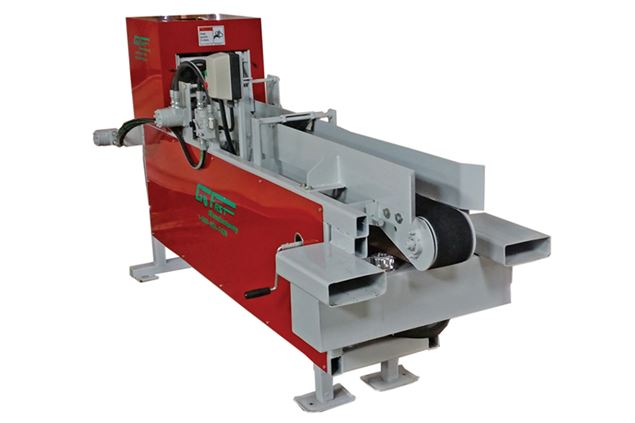
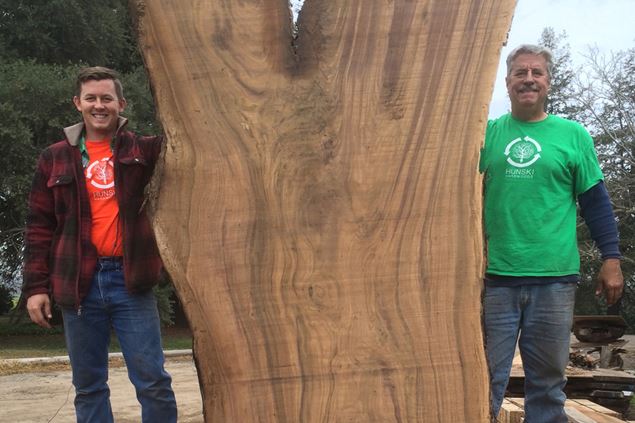

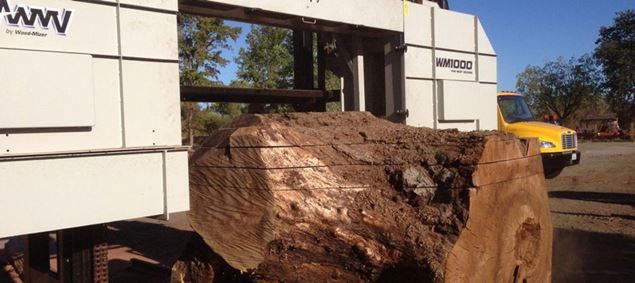

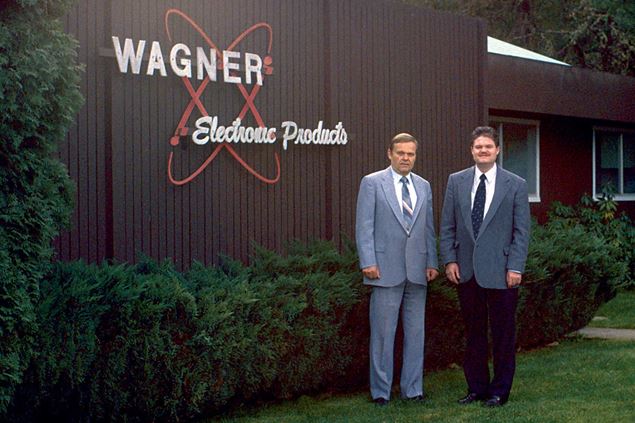
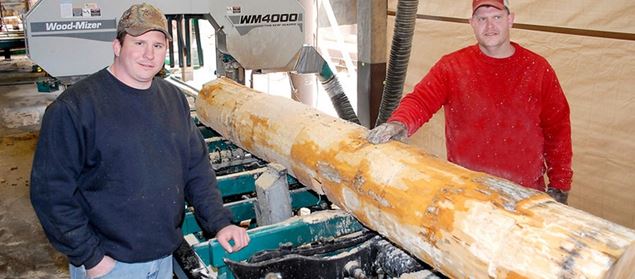
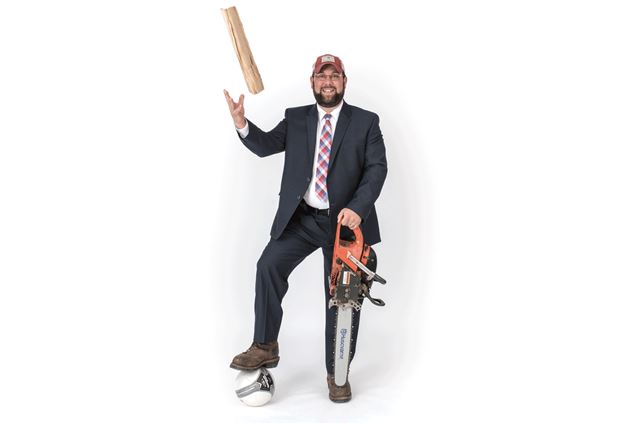

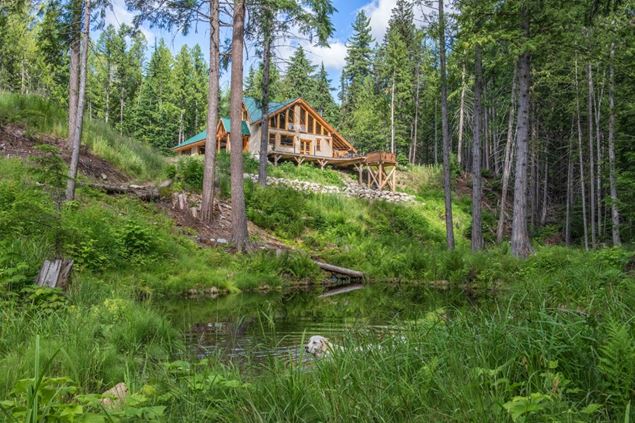

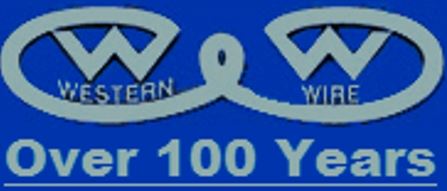
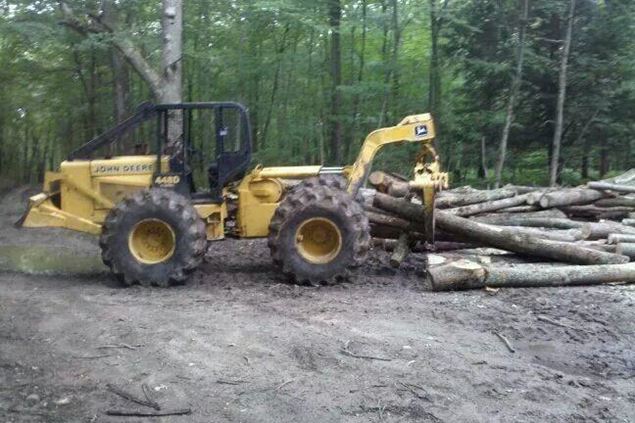



.gif)
